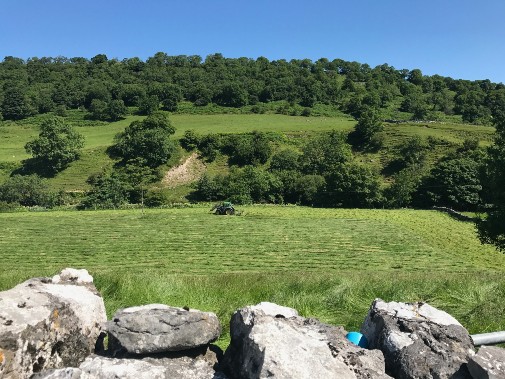Research shows how historic landscapes shape biodiversity and its protection
Posted on 20 December 2022
 The study includes areas in the Yorkshire Dales National Park
The study includes areas in the Yorkshire Dales National Park
The research used archaeological data - specifically Historic Landscape Characterisation data - to examine historic landscapes within protected areas like National Parks and Areas of Outstanding Natural Beauty. The research shows how historic patterns of land use have shaped the landscapes in Britain protected for biodiversity.
Areas in the analysis included the Howardian Hills, North York Moors, Yorkshire Dales and Nidderdale along with 10 National Nature Reserves and 190 Sites of Special Scientific Interest across North Yorkshire. Historic houses and estates with popular nature attractions like Castle Howard, Duncombe Park and Nunnington Hall were also included in the study.
At Duncombe Park, for example, a medieval deer park became a designed landscape for a stately home which maintained that woodland. This long management history is, in greater part, responsible for it now being a nationally important haven for beetles and other insects, while in other locations woodland has been dramatically reduced or cleared altogether.
Influence
Dr Michael Stratigos, from the University of York’s Leverhulme Centre for Anthropocene Biodiversity who led the research, said: “We found that protected areas favour locations with character derived primarily from changes in land-use that occurred in the 18th and 19th centuries. How those historic changes shaped biodiversity should form a priority for research moving forward.
“The data points to the influence that large estates have had, which has implications for protected area management and access to natural spaces. Large estates, like Castle Howard and many other privately owned estates, had in the past and continue in the present, to be responsible for much of the most valued biodiversity in England.”
Targets
Dr Stratigos said: “This week at COP15 in Montreal, the ambition to protect 30% of the globe by 2030 has been in negotiation. To meet these ambitions, the expansion of existing protected areas and the designation of new protected areas should take greater consideration of the types of historic landscape being designated to improve the protected area network.”
The research suggests that if similar types of historic landscapes are designated to meet 30x30 targets, similar outcomes and results can be expected in terms of biodiversity in protected areas.
Protection
Dr Stratigos added: “Estate landscapes have often maintained certain management regimes over long periods of time resulting in highly-valued biodiversity. For example, patches of semi-natural ancient woodland were incorporated into the landscape designs of 18th and 19th-century country houses which have been maintained to this day.”
“On the other hand, protected areas for the most part cede management of nature to landowners, and the majority of these are owned privately. Thus biodiversity protection is most often done by, and in many ways for, those landowners who will be much wealthier than average. This history and pattern of ownership itself owes much of its origin again to those changes enacted in the 18th and 19th centuries. Expansion of protected areas via 30x30 and perhaps other biodiversity protection schemes could, if we aren’t careful, exacerbate wealth inequalities.”
The researchers point out that designating different types of historic landscapes in these areas for nature provides an opportunity to generate diversity and perhaps improve access as a benefit to different groups of people, including members of the public who visit national parks and historic attractions.
Explore more news

Sodium channels in breast cancer cells a promising target for future treatments, study reveals
Thursday 25 July 2024

Cooling the classroom: University of York researchers to investigate UK schools’ responses to hot weather
Wednesday 24 July 2024

Hunter-gatherers kept an 'orderly home' in the earliest known British dwelling, study shows
Tuesday 23 July 2024

Study uses Game of Thrones to advance understanding of face blindness
Tuesday 23 July 2024

York academic contributes to new report on men’s health which reveals disparities between most and least deprived areas in the UK
Wednesday 17 July 2024
